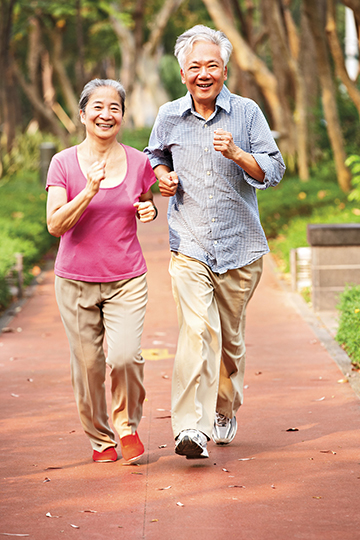Your doctor has told you, “You need to exercise.”
You know nothing about exercise. You haven’t exercised a day in your life. Sure you have shoveled snow, raked leaves, hauled wood, scrubbed floors and windows, and chased your kids and your pets around. But that’s not the same as exercise.
You know it’s important to build up your strength, increase your heart #health and lose some weight. You want to do it. You just are not sure how.
Beginning an exercise regime can seem like such a daunting idea. You wonder, “How can I get the amount of exercise I need to improve my health without spending a bunch of time and money doing something I don’t want or like or understand how to do? “
The answer may be simpler than you think.
One of the best ways to develop an exercise program that is effective, inexpensive and easy to follow is to #walk your way to better health.
Walking provides numerous health benefits. First and foremost it improves cardiac risk factors such as cholesterol, blood pressure, diabetes, obesity, vascular stiffness and inflammation, and mental stress. Studies like this one here have shown that regular daily walking was linked to a 22 per cent lower death rate, an 18 per cent lower risk of coronary artery disease, a 35 per cent lower risk of heart attack and a 34 per cent lower risk of stroke.
Walking has other very important health benefits as well.
Participating in this activity on a regular basis can help protect against dementia and depression. It can also be a useful part of maintaining a healthy weight. And because walking is a type of “cardio” exercise, it tends to act as an appetite suppressant, serving to guard against obesity and diabetes.
Walking will build muscle strength in your lower body including your legs, feet and hips. It is particularly effective at building strength if you include stairs, inclines or hills in your walk. Thinking of “standing tall” as you walk will also enhance your posture positively impacting your back and shoulder muscles. Increased muscle strength combined with increased cardiovascular capacity equals increased #fitness. Better fitness translates directly into better quality of life. It means more energy, more capability and more independence.
There are additional benefits if you walk on a natural path or trail rather than on cement or asphalt. The uneven nature of the path increases your proprioception – the ability of your brain to recognize movement and spatial orientation. As your body navigates the uneven surface of the path, the nerves of your foot are stimulated and send messages to the brain, which then sends messages back to your foot, ankle and leg. Increased proprioception results in better balance and an increased ability to prevent falls.
Balance is important. So is fall prevention. Walking can help both.
Walking outdoors in a natural environment is incredibly beneficial to mitigating the negative mental health effects we experience in a life increasingly spent alone and indoors. Nature deficit disorder is not an official psychological diagnosis but an anecdotal observation of the positive mental health impacts of being in nature.
Social isolation is another prevalent negative. Simply “getting out” for a walk means more opportunities for social interaction and the possibilities only increase as the regularity and duration of walks increase.
5 simple steps to get started on a walking program.
- Start slow
When you start out, walk as far as you can before you need a rest. Then rest as long as you need to and turn around and walk back to your starting place. Depending on your fitness level and general health you may initially only be able to walk for 10 minutes or less. As you get stronger, you will be able to walk further and faster.
- Stay consistent
The easiest way to build a new habit is to associate it with a habit you already have. Aim to to walk at the same time everyday with a goal of walking at least five days per week. The time of day you walk is up to you, but its best to set a routine based on something else you do routinely. Walk right after breakfast or just before lunch so it becomes a built in habit.
- Keep it simple
Walk wherever you are. Sure it’s great to walk outdoors or on a nature trail but that’s not always possible. Its not even possible to walk across the parking lot when it when its an icy minus 20 degrees. Walking in the hallways of your building or through a shopping mall works just as well.
- Aim for duration not distance
It doesn’t matter how far you walk. Aim to walk for 30 minutes and keep the pace as brisk as you comfortably can. Your walk should be pleasant and energizing, not laborious and difficult.
- Get a walking buddy
Maintaining an exercise routine is easier and much more fun if you have a workout buddy. Enlist family, friends or neighbours to walk with you. The social rewards are just as important as the physical ones.




